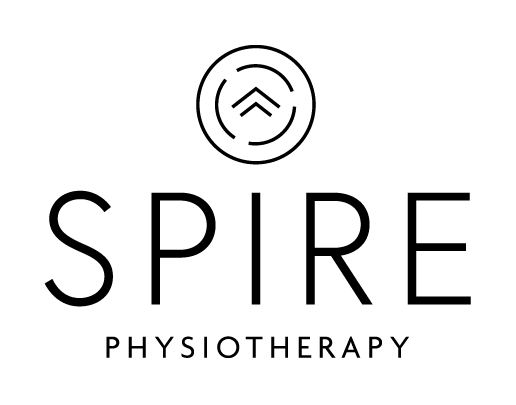WHEN SHOULD I START PRENATAL PHYSIOTHERAPY?
I’m Newly Pregnant, When Should I Start Prenatal Physiotherapy?
We are so glad you asked! This is a common question we receive, and the short answer is: It depends on your pregnancy as well as your goals! If you are looking for more detail in the answer, keep reading below for the long version.
1st Trimester:
This rollercoaster ride of hormonal changes can vary significantly person to person! Many individuals feel mild changes and continue on with subtle modifications to lifestyles very comfortably. Others may find fatigue, nausea and other pregnancy related symptoms can cause drastic changes to activity. During the first trimester, internal examinations may or may not be indicated, depending on a variety of factors. Before commencing any internal work your treating pelvic floor trained physiotherapist will have a detailed conversation regarding the risks and benefits of adding this to your treatment. Our main goal at this time is educating on a variety of topics which may include; pelvic floor identification and evaluation, breath patterning and awareness, allied health resource lists and referrals, establishing a baseline for movement goals and addressing any early discomfort or symptoms. Prenatal physical activity should be considered a front-line therapy for reducing the risk of pregnancy complications, and enhancing maternal physical and mental health(1). With research on our side, our first priority is helping you find exercise that is safe, comfortable and fun to do. Helping you move forward with confidence is our top priority.
2nd Trimester:
As posture and body mechanics change, so should your strength and endurance training - let us help! Pregnant women should accumulate at least 150 minutes of moderate-intensity physical activity each week to achieve clinically meaningful health benefits and reductions in pregnancy complications(1). We will continue to assess rib or abdomen changes and teach you how to exercise within your body’s current capacity. Did you know your centre of gravity (centre of balance) can change up to 3 inches during pregnancy(2,3)? Wild right!? If pain or discomfort starts to present, we will teach you drills to assist with symptom management. Internal examinations may be appropriate at this time to treat any tension, pain or help with key learning moments. If at this point you are craving some bizarre carnival food, we get it and love to hear about it!
3rd Trimester:
We have a jam packed list for this stage of pregnancy. We discuss birth preparation ideas such as; perineal massage, labour and birth prep positions, packing your hospital bag, planning for both styles of delivery (vaginal and c-section) and guidance on early postpartum rehabilitation. We will work with any other members of your birth team to ensure your goals are met.. We welcome your partner to attend an appointment with you to learn how they can help with items such as counter pressure, partner massage and positional support. If beneficial to the patient, we will perform the perineal massage together and learn about the pelvic anatomy.
The number of visits may vary with each pregnancy, but we encourage you to book one appointment early (~12-14 weeks) to guide the prenatal plan and goal setting with your pelvic floor physiotherapist. From there, guidance considering your goals, current activity level and insurance coverage and access to physiotherapy can be openly discussed.
It’s important to note that management of any bladder, bowel, sexual or pain symptoms are always screened at each trimester to ensure treatment is catered to your journey. Pelvic floor physiotherapists provide a proactive, supportive, and evidence-based approach to promoting comfort and function during pregnancy and preparing the body for birth and recovery. Our goal is to empower women to feel in control of their bodies and reduce the risk of long-term pelvic floor issues. Roller coasters don’t have to be fear provoking, they can be quite fun. Let us help you enjoy the ride!
Book a Prenatal Physiotherapy Assessment
References:
1. 2019 Canadian Guideline for Physical Activity throughout Pregnancy by Michelle F Mottola,1 Margie H Davenport,2 Stephanie-May Ruchat,3 Gregory A Davies,4 Veronica J Poitras,5 Casey E Gray,6 Alejandra Jaramillo Garcia,5 Nick Barrowman,7 Kristi B Adamo,8 Mary Duggan,9 Ruben Barakat,10 Phil Chilibeck,11 Karen Fleming,12 Milena Forte,13 Jillian Korolnek,14 Taniya Nagpal,1 Linda G Slater,15 Deanna Stirling,16 Lori Zehr17
2. The Influence of Pregnancy on the Location of the Center of Gravity in Standing Position Journal of Human Kinetics volume 26 2010, 5-11 Section I – Kinesiology by Agnieszka Opala-Berdzik1, Bogdan Bacik2, Joanna Cieślińska-Świder¹, Michał Plewa¹, Monika Gajewska¹
3. Spinal curvature and characteristics of postural change in pregnant women. Acta Obstetricia et Gynecologica Scandinavica [Internet]. 2012 Jun 18 [cited 2021 Nov 25];91(7):856–61. By Okanishi N, kito n, Akiyama M, Yamamoto M.




